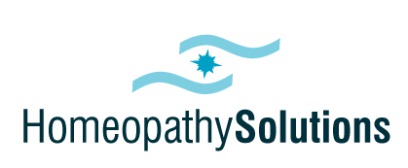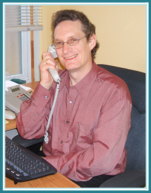Homeopathy - Beyond Mystique
by: Sanford Lapedis, ND, MDHS
Dr. Kent, a highly qualified and experienced physician, Professor of Anatomy at the American College of Saint Louis, was helplessly watching the health of his adored wife progressively deteriorate. Despite the mediation of his most competent colleagues, asthenia (lack of bodily strength), persistent insomnia and anemia kept Mrs. Kent bedridden for months on end. Her condition became more and more perilous until, reluctantly, Dr. Kent acceded to his wife's request to consult Dr. Phelan, a highly recommended homeopath.
Dr. Phelan examined the patient and then proceeded to question her about the manifestation of her malady. He also made penetrating inquiries as to her mental and emotional state, her reactions to cold, to heat, as well as the impact of climatic and seasonal conditions. After careful consideration of all the information, he administered a homeopathic remedy, and instructed her husband to repeat the dose every two hours until the patient fell asleep. Dr. Kent thereupon decided that the homeopath must be a complete fool, firstly for asking such absurd questions that seemed to him to be entirely unrelated to his wife's illness, and secondly for suggesting that his little globules would succeed in easing her to sleep where strong drugs had failed. However, not wishing to upset his wife, but without conviction, he administered the next dose. When he re-entered her room for the third dose, he was astounded to see his wife sleeping peacefully and profoundly. Little by little, the patient responded to the daily ministrations of Dr. Phelan and within weeks, had completely recovered.
Professor, Dr. James Tyler Kent (1849-1916) was so impressed by what had been accomplished by homeopathic treatment, he zealously took up the study of homeopathy and thereafter devoted his life to the science. This skeptical husband became one of the foremost homeopaths and made great contributions to the realm of medical science including the great classical works known and used throughout the world: Lectures of Homoeopathic Philosophy, Homoeopathic Materia Medica, Repertory of the Homoeopathic Materia Medica, and many others.
Ironically, the same doubts and reservations Dr. Kent first entertained, still arise today in the minds of many. What is homeopathy? How does it work? Is it really a science? Can those little sugar pills be effective or is improvement merely a placebo effect?
For the answers we go back to Samuel Hahnemann (1755-1843), who founded and developed homeopathy into an accurate, precise and reliable system of therapeutics. A brilliant German physician of his era, his scientific sensibilities were vastly offended by the then prevalent medical practices of bloodletting (using the method of venesection or of leeches) and suppression of symptoms. He observed that neither treatment was curative. While the concept that like cures like (similia similibus curantur) was not entirely new, being known to many ancient cultures, it was left to Dr. Hahnemann to apply and organize this principle into a scientific therapy based on observation and experience which was factual, rational (logical) and demonstrably true.
One day, while translating Cullin's Materia Medica, he noted that the extract of cinchona bark (china) is the most effective cure for malaria. It was speculated that china was effective because it was aromatic and bitter. Hahnemann was also a chemist and knew that there are many other substances which are both aromatic and bitter, yet they are not effective in treating malaria. Logic indicated that these properties were not why cinchona was effective and he was inspired to search for the true reason. In his studies, he was struck by the statement that a drug that produces symptoms in healthy human beings can cure those symptoms when present in sick people. His brilliance and originality guided him to consider this statement in conjunction with the fact of the effectiveness of china in treating malaria. His inquiry led him to conduct the first of many experiments on himself and he ingested doses of china. After some time, symptoms of malaria appeared in his body and subsequently disappeared when he discontinued taking china. Thus he concluded that china is effective in treating malaria not, as it had been erroneously postulated, because it was aromatic and bitter, but because it produces the same symptoms as the disease.
Applying the principle of like cures like, he experimented on himself (and sometimes on volunteers amongst his disciples) and verified that extracts of substances which produced symptoms in a healthy individual did indeed eliminate them in a sick person exhibiting those symptoms. This was the beginning of an entirely new system of medicine which Hahnemann called Homoeopathy, from the Latin homois (similar) and pathos (suffering).
Subsequently, Dr. Hahnemann realized that the administration of gross forms of a remedy tended only to palliate (relieve symptoms and ease suffering) rather than cure. He saw that in order to restore good health to a patient, it was necessary to devise a more subtle or refined medicine that would reach the source of illness. This reveals two important tenets staunchly held by Hahnemann. Firstly, that crude forms act on the surface level while more refined forms act more deeply because of potentiality of power. Secondly, that there is a subtle energy within the human body which maintains equilibrium and can compensate for disruptive changes. When the balance or equilibrium is upset, the imbalance is reflected in the form of outward symptoms. So it is the doctor's responsibility to employ medicine that will penetrate to the cause of the symptoms and restore the body's natural ability to cure itself.
After years of research and more than a touch of genius, he devised a method of potentiation which is a mathematical, mechanical process to reduce crude substances to a state of solubility, assimilability, and therapeutic capacity, for use as a healing remedy. Crude substances are crushed, then macerated (made soft by soaking). The resultant liquid is called the mother tincture, designated by the symbol Q.
One part of the mother tincture is diluted by ninety-nine parts (centesimal scale) or nine parts (decimal scale) of water or alcohol and thoroughly sucussed (shaken forcibly). The result is designated 1C (or 1X). For increased strength, one part of 1C (or 1X) is diluted with ninety-nine (or nine) parts of water or alcohol and sucussed, resulting in the potency 2C (or 2X). The process can continue to any degree, each stage producing a stronger potency than the previous one. Each successive step is known by the name of the medicine and the number of dilutions. e.g. Arnica 30C.
Theoretically when a substance is diluted beyond the twelfth potency, none of the original molecules remain. So you might wonder how the remedy is stronger, for you would expect it to be strongest in its original form and weaker as it is diluted. However, as you can readily see from the above description of the technique of potentiation, it is not merely a process of dilution. Moreover, studies have proven that even when none of the original molecules remain, each dilution carries information about the original substance in a more subtle and more potent form of energy.
When symptoms are suppressed, leaving their cause untreated, another form of disease usually arises - often more severe. Homeopathy does not mask outer symptoms. Rather it uses these symptoms as indications of an imbalance in the system. These indicators help to determine the selection of the particular remedy with the capacity to plumb to the source of the disease and stimulate the body's own defense mechanism to heal itself. It is important to note two factors in the above. 1) Homeopathic treatment goes to the root or source of a malady. 2) It does not interfere with or impair the body's natural function, but rather stimulates the auto-immune system or vital force within a person to regain its own natural capacity to be self-regulatory.
Another wonderful and distinct element of homeopathy is that it treats the patient, not the disease. An ailment may manifest different symptoms in different individuals. For example, one person with a cold may have a sore throat and pain in the chest while another may have headache, fever and an earache. Thus it often happens that different people suffering from the same ailment will require different remedies. The symptoms are different so the prescription will be different; there is no one over-all or general "cold remedy". The remedy is determined by the symptoms presented and not by the disease. In each case, astute questioning will reveal the significant symptoms which point to the choice of the optimum remedy.
You may have heard people refer to aggravation as a result of homeopathic treatment. Under the action of a deeply acting homeopathic medicine, latent disease may express itself in the return of old symptoms. This represents the reaction of the organism to the stimulus of a well selected remedy and is generally curative. The use of modern potentiation has reduced the possibility of aggravation which may follow shortly after intake of the remedy. This action, though in some infrequent cases might be intense, is usually gentle, always short-lived and followed by decided improvement.
The principle, "like cures like", is described by Dr. Kent as "setting a thief to catch a thief". Homeopathic medicine - those innocuous little sugar pills - when well selected by a competent physician, cures safely, gently and permanently. Homeopathy is a vitalizing therapy which aims to bring about or restore balance to the three strata of existence: mental, physical and spiritual. Increased energy gives one the strength to appreciate and act for the betterment of humankind, and in the individual existence, the state of well being and balance is reflected in a life of harmony and fulfillment.
Leave the Importance of Homeopathy page and go to the Articles on Homeopathy page.





